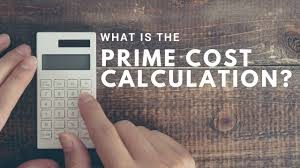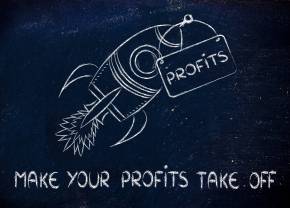Important Bar Metrics and How to Calculate Them
Keeping track of costs, sales, overheads, and your profits and losses is essential when running a bar or restaurant. Food and beverage outlets run on slim margins and it takes only one slip to have managers and their businesses seeing red. Managers then find themselves trying to recover the costs, and this can sometime be more detrimental to the business than the initial losses themselves.
In order to help you keep your financials in check here is a list of important bar and restaurant metrics and the calculations needed to work them out.
 Cost of Goods Sold (COGS)
Cost of Goods Sold (COGS)
Cost of Goods Sold is one of the largest expenses for bars and restaurants yet it is a very variable cost. It is based on how much you sell verses how much you order and is therefore based on business volumes. It important to keep track of your COGS and to calculate this number you’ll need a beginning inventory, a final inventory and your invoices showing all that you’ve purchased in this time period.
Once you have these your COGS is easy to calculate:
Beginning Inventory + Purchased Inventory – Final Inventory = Cost of Goods Sold (COGS)
The period over which you calculate your COGS is the length of time between your beginning and final inventories. It’s typical to do this every month, and on an annual basis. If you choose to you can also calculate COGS over certain time periods, like the Football World Cup, to see the impact these time periods have had on your business.
Overhead Rate (Fixed Costs)
Your overheads are your fixed costs and include rent, electricity, licences, phone bill, and any other costs you have to pay, irrelevant of how much product you sell. Usually these are fixed price bills. Calculating your Overhead Rate means generating a number that prices your overheads by the amount of hours or days that you’re open. This allows you to know how much it costs you to run your location over this time scale, taking into account only your fixed costs.
Here’s how to calculate your overhead rate by the hour:
Total Fixed Costs ÷ Total Amount of Hours Open = Overhead Rate
If your fixed costs are $4,000 and you’re open 12 hours a day, every day then, for a 30 day month, it costs: 8000 ÷ (12×30) = $11.11 to run your location for every hour that you’re open in a 30 day month.
 Prime Costs
Prime Costs
Your Prime Costs are a variable expense and they are the sum of your labor bill and your COGS. Prime costs are important because they are variable and therefore they are the costs that are influenced by business volume. Low business volume should equal lower Prime Costs, if it doesn’t then you need to look the contents of your Prime Costs and see where it went wrong; did you over order? Did you have too many staff working? These are costs that you can influence. You can negotiate on item prices, reduce the size of your orders, and control the amount of hours worked by your hourly employees.
The equation for calculating Prime Costs is:
Labor costs + COGS = Prime Costs
The labor costs portion of your Prime Costs includes not only wages paid but also total taxes, benefits and any insurance contributions or costs. Prime Costs are one of a restaurants largest expenses and typically run at 60-65%. Because it is this large it is one of the most important costs for you to keep an eye on.
Variable Costs
Your Variable Costs include your prime costs but also add in any other expected and unexpected expenses you may have incurred during that time period such as repairs, a facebook marketing campaign, dry goods (like napkins), extra glassware, and anything that isn’t a regularly occurring cost at your location. Variable Costs are easy if you have all your invoices for said items.
The equation for Variable Costs is:
Prime Costs + any irregular invoices that need recording = Variable Costs
Your Variable Costs are important because they are necessary items, such as repairs and dry goods, which need to be included in your overall costs.
 Gross Profit
Gross Profit
Your Gross Profit is the amount you have remaining after you’ve covered your COGS, to pay the rest of your expenses. Your Gross Profit number is the amount of money you’ve made from the items you’ve sold in the chosen time period is covered.
It is easy to calculate, here’s the equation:
Total Sales – COGS = Gross Profits
To ensure that this number is accurate you need the time period of your “total sales” to exactly match the time period you used for calculating your COGS. If there’s even one day extra included or excluded on either side then this number will be incorrect and useless.
Net profit
Net profit is how much overall profit your business has made over the course of the given time period; usually a month, quarter or year. This is the number. The higher the number is the more successful your business has been and the more profit you’ve made. Your net profit takes into account every single cent you’ve spent running your location and takes these away from your sales total.
The equation for net profits is:
Gross profit – Fixed and Variable Costs = Net profit
Calculating net profits is extremely important because this is why we’re in business; to make profit. Everything you spend and make goes into calculating this golden number and this is why you need keep orderly and accurate accounts.
Break-Even Point
The Break-Even Point is one of the most important numbers when setting up your business or trying to justify a large expense, for example a new set of furniture. It allows you to work out how much you need to do in sales before you begin earning profit or how much you’ll need to earn before you start earning back on your new investment.
Total Fixed Costs ÷ ( (Total Sales – Total Variable Costs) ÷ Total Sales) = Break-Even Point
say your Total Fixed Costs are $4000, your restaurant does $12,000 in sales in one month, and your Variable Costs for that month are $3,000. Total Sales – Total Variable Costs = $9,000. Then $9,000 ÷ $12,000 (Total Sales) = 0.75. Total Fixed Costs ($4,000) ÷ 0.75 = $5,333. This means that you’ll start earning profit once you’ve made $5,333.
All of these metrics are calculated over certain time periods, usually monthly, quarterly and annually, and allow you to keep track of finances in your location. Calculating these metrics periodically ensures that you know whether you’re on to meet, exceed, or fall short of your financial expectations. Using the results to these equations you catch any errors and you can adjust your approach as necessary to correct any problems of overspending.



